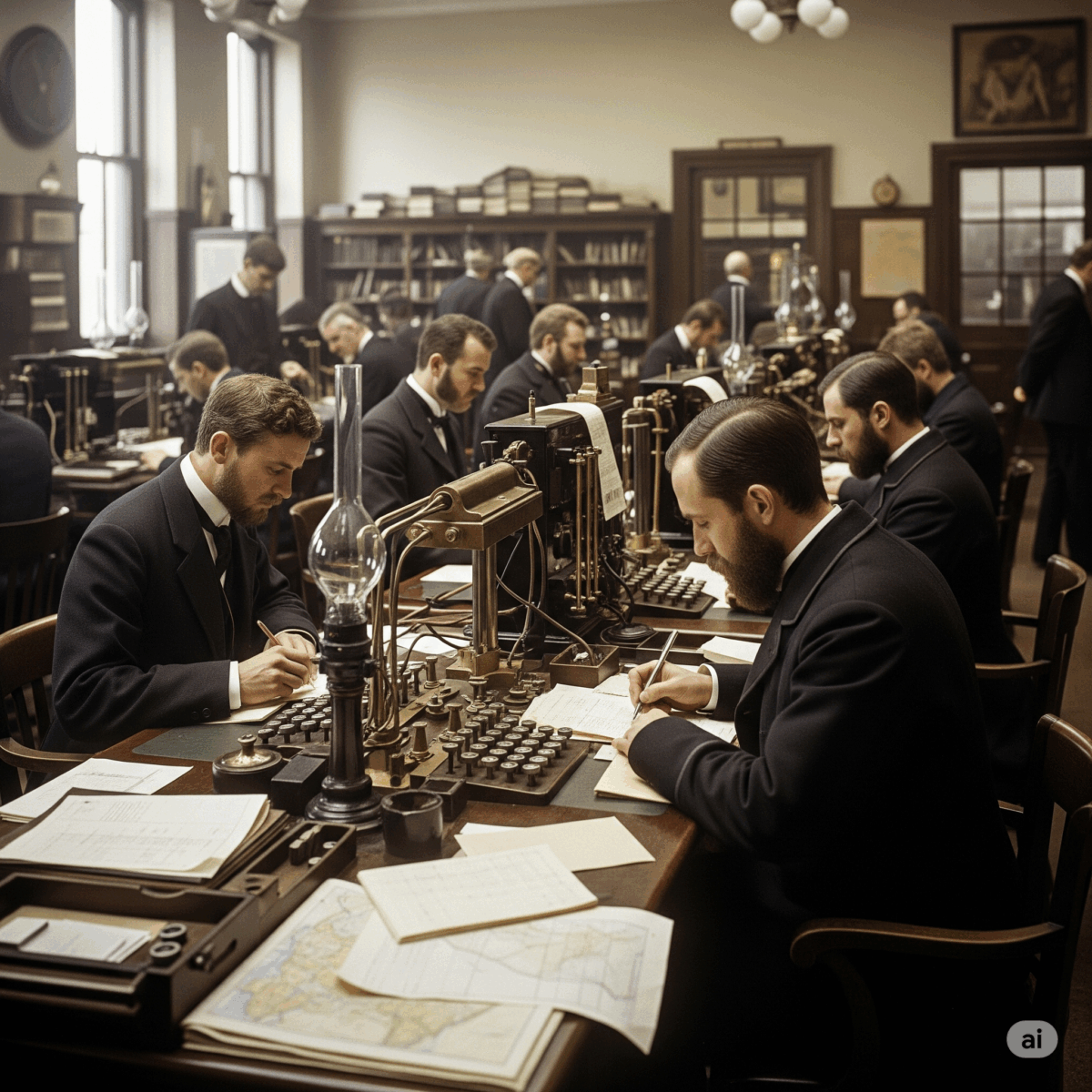On this very date, August 5th, in the year 1858, a momentous, albeit initially short-lived, event took place: the first transatlantic telegraph cable was completed. After numerous failed attempts and significant engineering challenges, the cable, laid across the floor of the Atlantic Ocean between Ireland and Newfoundland, successfully transmitted its first official message. That message, sent by Queen Victoria to President James Buchanan, was a simple greeting, yet it heralded a profound shift in global communication.
Imagine a world where news and correspondence between Europe and North America took weeks, if not months, to travel by ship. The completion of the transatlantic cable promised to shrink that vast ocean of time and distance, allowing for near-instantaneous communication. The initial excitement was palpable. Celebrations erupted on both sides of the Atlantic. The world suddenly felt smaller, more interconnected.
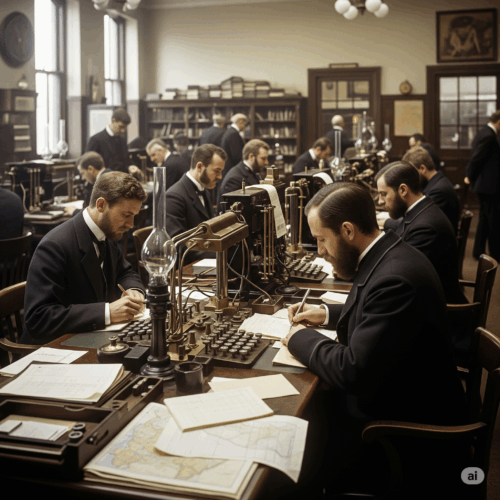 However, the triumph was fleeting. Just a few weeks later, the cable mysteriously went silent. Prematurely high voltage and inadequate insulation were later identified as the culprits. The dream of instant transatlantic communication was temporarily dashed. Yet, this initial, albeit brief, success proved the concept was viable and spurred further innovation and investment. It laid the groundwork for the sophisticated global communication network we rely on today.
However, the triumph was fleeting. Just a few weeks later, the cable mysteriously went silent. Prematurely high voltage and inadequate insulation were later identified as the culprits. The dream of instant transatlantic communication was temporarily dashed. Yet, this initial, albeit brief, success proved the concept was viable and spurred further innovation and investment. It laid the groundwork for the sophisticated global communication network we rely on today.
While the first transatlantic cable was ultimately a failure in its immediate operation, its completion on this date in 1858 was a pivotal moment. It represented a giant leap in our ability to connect and share information across vast distances. It sparked the imagination of inventors and engineers, paving the way for future advancements in telegraphy, telephony, and ultimately, the internet.
Now, how does this 19th-century technological hiccup relate to your life in the 21st century? The story of the first transatlantic cable, with its initial burst of promise followed by temporary failure and eventual triumph, offers valuable lessons about perseverance, the power of connection, and the importance of continuous learning and adaptation – principles highly relevant to personal and professional growth today.
Think about your own endeavors. How often do you face setbacks after an initial spark of excitement? How crucial are your connections to your progress and opportunities? The story of this early cable reminds us that progress is rarely linear, and that the ability to learn from failures and maintain connections can ultimately lead to success.
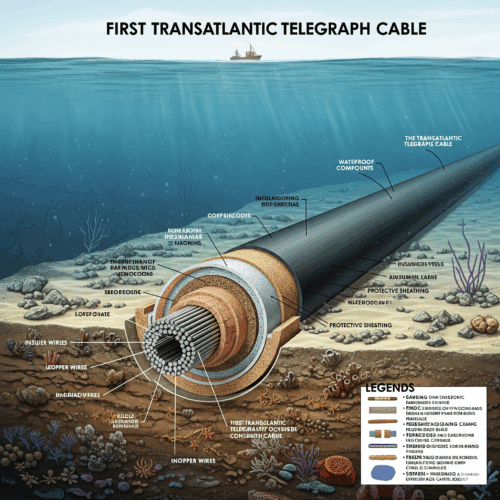 Here’s how the story of the first transatlantic telegraph cable, completed on this very date, can benefit you today:
Here’s how the story of the first transatlantic telegraph cable, completed on this very date, can benefit you today:
Harnessing the Spirit of Connection and Perseverance in Your Life:
- Embrace the Power of Networking and Global Connection:
- The Historical Parallel: The transatlantic cable aimed to bridge continents and foster faster communication, opening up new possibilities for trade, collaboration, and understanding.
- Your Benefit: In today’s hyper-connected world, actively building and nurturing your network is crucial for personal and professional growth. Embrace opportunities to connect with people from diverse backgrounds and locations. You never know where your next opportunity or source of inspiration might come from.
- Action Plan:
- Identify three individuals you admire or who work in fields you’re interested in, who are geographically distant from you.
- Reach out to them with a thoughtful message expressing your interest in their work and asking for a brief virtual informational interview.
- Actively participate in online communities and professional platforms related to your interests.
- Make a conscious effort to connect with at least one new person online each week who could broaden your perspective or offer new insights.
- Persevere Through Initial Setbacks and Learn from Failures:
- The Historical Parallel: The first transatlantic cable failed shortly after its initial success, but this setback didn’t deter future efforts. Instead, it provided valuable lessons for improvement.
- Your Benefit: When you encounter obstacles or failures in your own pursuits, view them as learning opportunities rather than reasons to give up. Analyze what went wrong, adapt your approach, and keep moving forward. Resilience is a key ingredient for achieving long-term goals.
- Action Plan:
- Identify a recent setback or challenge you faced.
- Take time to objectively analyze the reasons behind the setback, focusing on what you can learn from the experience.
- Develop at least two specific adjustments you can make to your approach based on these lessons.
- Re-engage with your goal, applying these new insights and maintaining a positive outlook.
 Recognize the Significance of Foundational Efforts:
Recognize the Significance of Foundational Efforts:- The Historical Parallel: The initial, short-lived success of the first transatlantic cable, despite its eventual failure, proved the concept and paved the way for future, more robust cables.
- Your Benefit: Sometimes, your early efforts in a new endeavor might not yield immediate or perfect results. Recognize that these foundational steps are crucial for building a solid base for future success. Be patient with the process and celebrate small milestones.
- Action Plan:
- Identify a long-term goal you are working towards where progress might seem slow.
- Break down the goal into smaller, foundational tasks.
- Acknowledge and celebrate the completion of each of these smaller tasks, recognizing their importance in building towards the larger objective.
- Maintain a focus on consistent effort and gradual improvement.
- Embrace Innovation and Adapt to Technological Advancements:
- The Historical Parallel: The first transatlantic cable was a groundbreaking innovation for its time, and its limitations spurred further technological development in communication.
- Your Benefit: In today’s rapidly evolving world, continuous learning and adaptation to new technologies are essential for staying relevant and competitive. Embrace opportunities to learn new skills and explore emerging tools that can enhance your personal and professional life.
- Action Plan:
- Identify one new technology or skill that could be beneficial in your field or personal life.
- Dedicate a specific amount of time each week to learning about and experimenting with this new technology or skill.
- Seek out resources like online courses, tutorials, or workshops to support your learning.
- Actively look for ways to apply your new knowledge in practical situations.
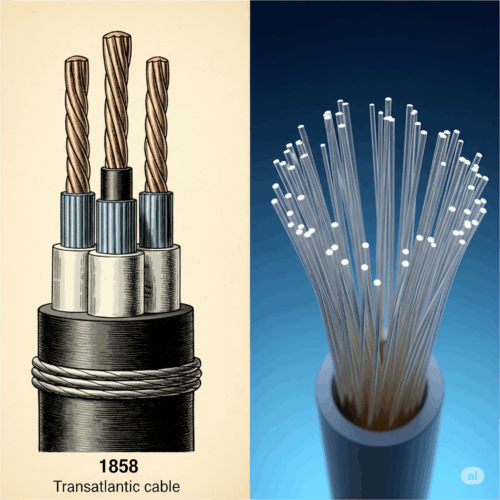 Value the Infrastructure That Enables Connection:
Value the Infrastructure That Enables Connection:- The Historical Parallel: The physical infrastructure of the transatlantic cable, despite its flaws, was essential for enabling communication across the ocean.
- Your Benefit: Recognize and appreciate the underlying structures and systems that support your daily life and opportunities, whether it’s the internet, transportation networks, or community organizations. Understanding how these systems work can empower you to leverage them more effectively.
- Action Plan:
- Choose one piece of infrastructure you rely on daily (e.g., internet, public transportation, local library).
- Spend some time learning about its history, how it functions, and the resources required to maintain it.
- Consider ways you can contribute to or support these essential systems in your community.
- Communicate Clearly and Effectively Across Distances:
- The Historical Parallel: The very purpose of the transatlantic cable was to facilitate communication, albeit initially in a limited form (Morse code).
- Your Benefit: In our increasingly globalized world, the ability to communicate clearly and effectively across geographical and cultural boundaries is a vital skill. Develop your communication skills, both written and verbal, and be mindful of cultural nuances when interacting with people from different backgrounds.
- Action Plan:
- Identify a communication skill you would like to improve (e.g., active listening, concise writing, public speaking).
- Seek out resources or opportunities to practice and develop this skill.
- When communicating with someone from a different cultural background, take the time to research and be mindful of potential communication differences.
- Actively seek feedback on your communication style and be open to making adjustments.
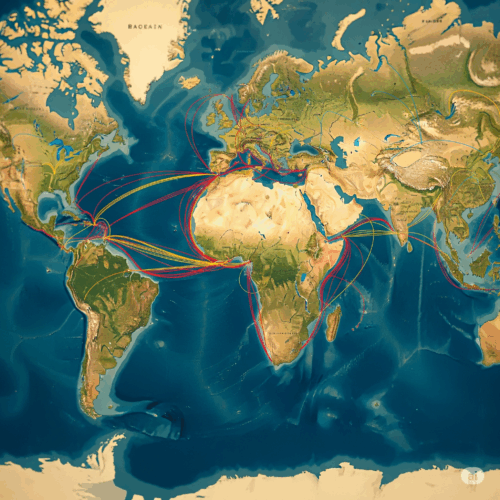 The story of the first transatlantic telegraph cable, completed on this day in 1858, serves as a powerful reminder that even seemingly small or initially unsuccessful endeavors can have a profound impact on the future. It underscores the importance of connection, perseverance, learning from setbacks, and embracing innovation. By reflecting on the spirit of this ambitious project, you can find inspiration and practical guidance for navigating your own challenges and opportunities in our interconnected world today. Let the whispers that once traveled haltingly across the ocean on that first cable remind you of the boundless potential of connection and the enduring power of the human spirit to overcome obstacles and build a better future.
The story of the first transatlantic telegraph cable, completed on this day in 1858, serves as a powerful reminder that even seemingly small or initially unsuccessful endeavors can have a profound impact on the future. It underscores the importance of connection, perseverance, learning from setbacks, and embracing innovation. By reflecting on the spirit of this ambitious project, you can find inspiration and practical guidance for navigating your own challenges and opportunities in our interconnected world today. Let the whispers that once traveled haltingly across the ocean on that first cable remind you of the boundless potential of connection and the enduring power of the human spirit to overcome obstacles and build a better future.

